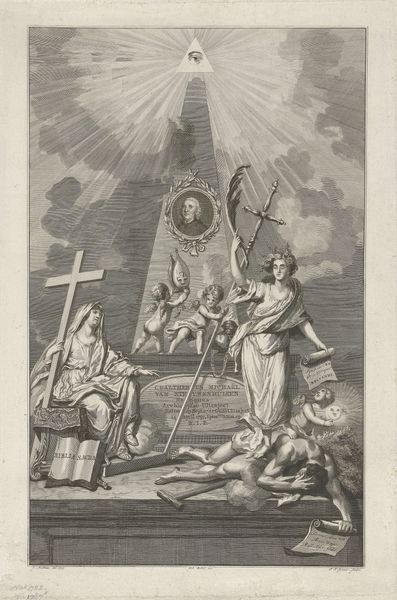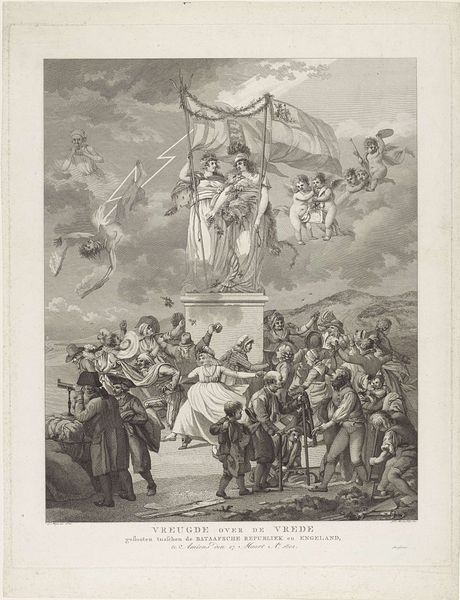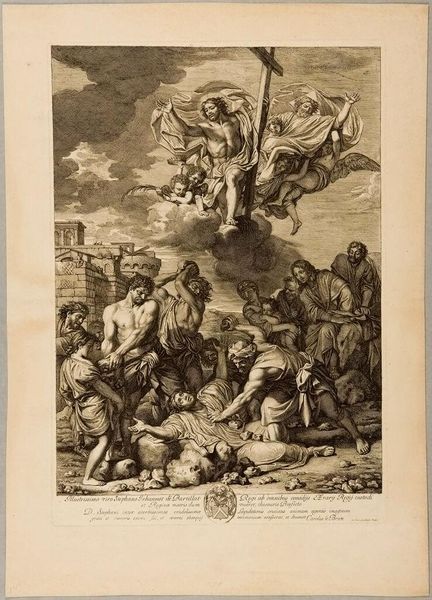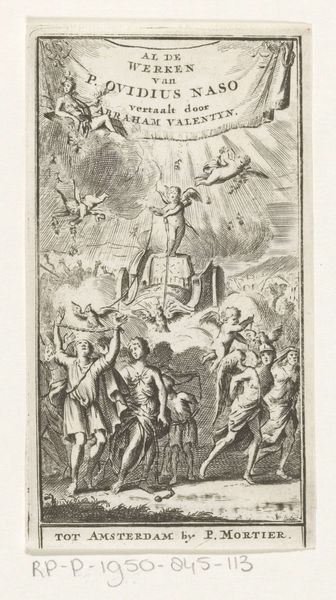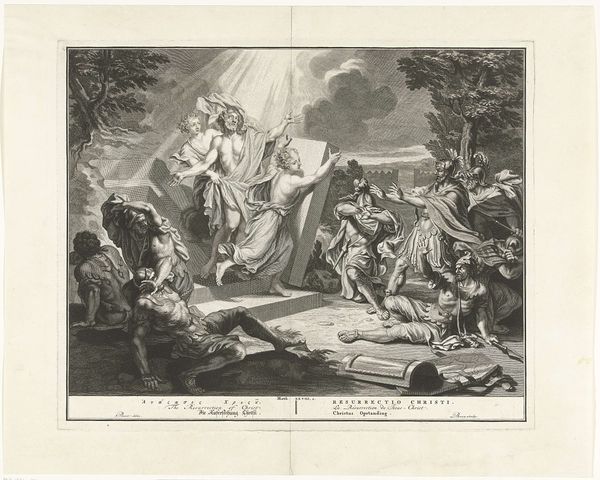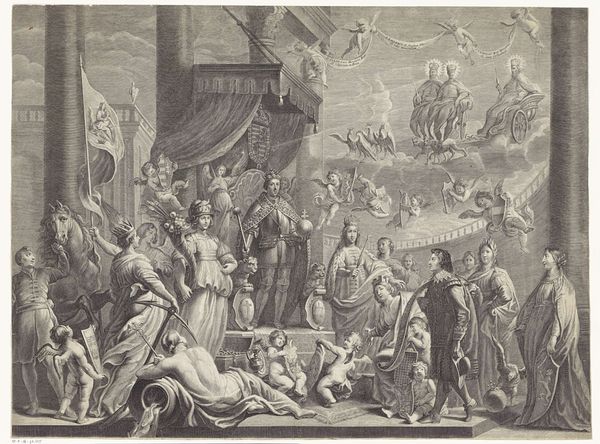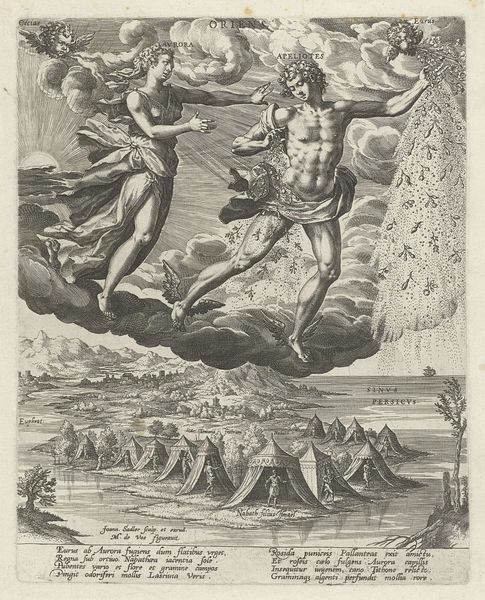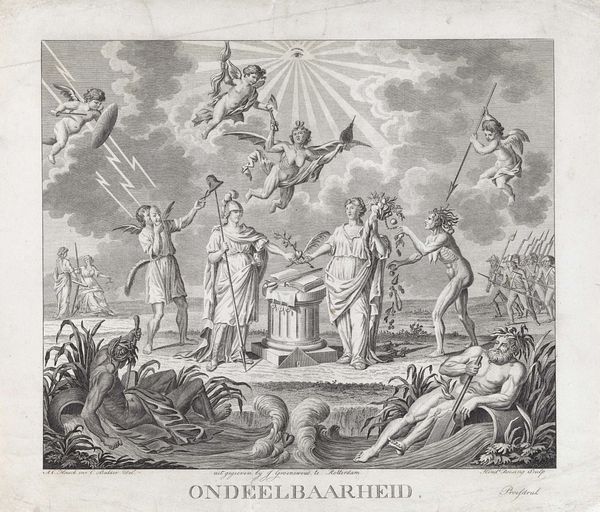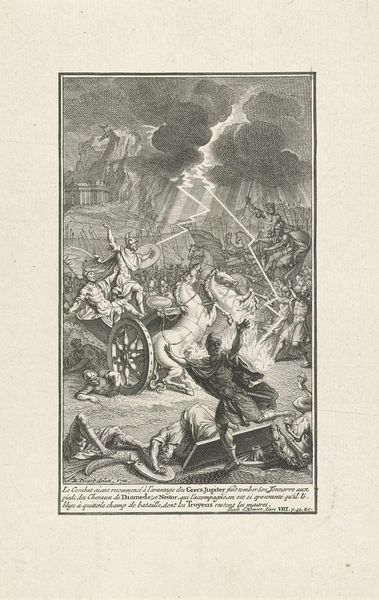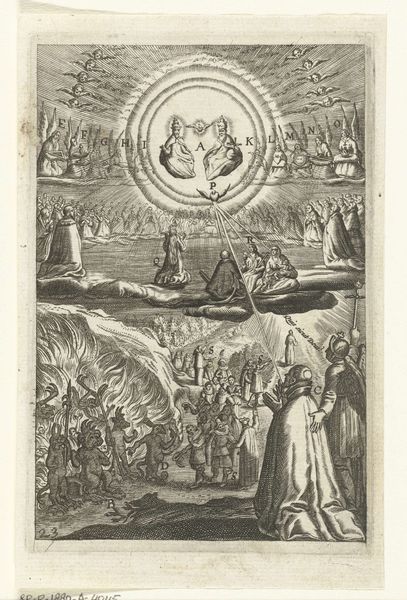
print, etching, engraving
#
neoclacissism
#
allegory
# print
#
pen illustration
#
etching
#
old engraving style
#
landscape
#
figuration
#
line
#
history-painting
#
engraving
Dimensions: height 306 mm, width 347 mm
Copyright: Rijks Museum: Open Domain
Editor: This is "Allegorie op de Waakzaamheid" from 1795, made by Hendrik Roosing. It’s an etching or engraving of, well, an allegory. There’s a lot going on. I’m curious about all the figures; they seem symbolic, like a dreamscape of watchfulness. How do you interpret this work? Curator: Indeed! It's a fascinating convergence of Neoclassical form and symbolic language. Look closely; Roosing presents us with layers of established symbols to communicate vigilance. Editor: I see two female figures on a pedestal, perhaps representing virtues? And is that a lion jumping over the barrier? Curator: Precisely. The figures, likely personifications of Prudence and Justice, stand together, representing the balanced state of a watchful society. The lion symbolizes courage and strength, while the watchful stork near them also represents diligence and preparedness. The sleeping man perhaps symbolizes ignorance. Where do you see the relationship between heavenly bodies (or 'cupids'!) and earthly actions? Editor: Ah, I see! So, all the cupids would suggest a divinely sanctioned purpose or inspiration? Are the military tents symbols, too, or are they just showing what is to be protected? Curator: Yes! And the tents are symbols of a nation requiring vigilance. They also reference contemporary military conflicts and political instability during that era. Does the radiant light emanating from the divine connect to a similar iconographic message? Editor: Definitely! It’s almost like enlightenment illuminating the need for protection. That kind of ties all of the symbolism together. Thanks, that helps so much with seeing beyond the surface details of the piece. Curator: Absolutely. It all serves as a reminder that cultural memory and shared iconography inform a nation’s ideals and identity, through vigilance.
Comments
No comments
Be the first to comment and join the conversation on the ultimate creative platform.
